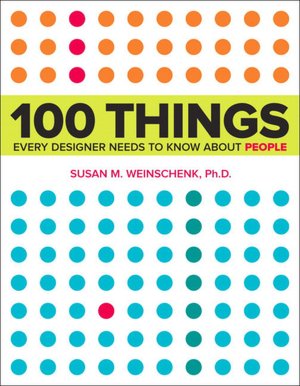Here are the things that are proven to make you happier:
Time to round up the research on happiness and see what works and what you can use.
First, yeah, a good chunk of happiness is controlled by your genes but there's a lot you can do to make yourself happier. Many of these techniques have been repeatedly tested and even worked with the clinically depressed.
Gratitude, Gratitude, Gratitude
I can't emphasize this one enough. Showing gratitude for the good things you have is the most powerful happiness boosting activity there is.
It will improve your relationships.
It can make you a better person.
It can make life better for everyone around you.
Believe me now?
Bronze medalists are happier than silver medalists. Why? They feel grateful to get a medal at all.
Every night before you go to bed write down three things good that happened to you that day. That's pretty much all it takes to get a happiness boost over time.
There's a second lesson here: the reverse is also true. Keeping track of the bad things will make you miserable. A convenient memory is a powerful thing. Do not train your brain to see the negative, teach it to see the positive.
Wanna make yourself and someone else extremely happy? Try a gratitude visit. Write someone a letter thanking them and telling them how much what they have done for you means. Visit them and read it in person. It's a proven happiness WMD. More info here.
Do what you are good at as often as you can
"Signature strengths" are the things you are uniquely good at and using them brings us joy. Exercising signature strengths is why starving artists are happier with their jobs.
Think about the best possible version of yourself and move toward that. Signature strengths are the secret to experiencing more "flow" at work and in life. Learn to be an expert here.
Spend as much time as possible with people you like
Spend as much time as possible with people you like. The happiest people are social with strong relationships. Not spending more time with people we love is something we regret the most.
Being able to spend more time with friends provides an increase in happiness worth up to an additional $133,000 a year. (Values for your other relationships are here.)
Being compassionate makes us happier (causal, not correlative.) Share the best events of your day with loved ones and ask them to do the same. It works. And compliment them -- we love compliments more than money or sex.
But I'm an introvert, you say? A little bit of extraversion here would do you good. Happiness is more contagious than unhappiness so with amount of exposure to others well-being scales.
Money is good. Many other things are better.
After about 75K a year, money has minimal effects on happiness. Read that again. Not that money won't increase happiness but if you want to be happier your time and energy are better spent elsewhere. It will not increase your moment to moment mood.
The Amish are as satisfied as billionaires and slumdwellers can be surprisingly happy. The happiest of all income groups is people making 50-75k a year. Money is good but wanting money can be bad. Loving money can make it harder to be happy. There are ways money can bring happiness but they are not what you expect.
Give
Giving makes us happier than receiving. In fact, it can create a feedback loop of happiness in your life. Volunteering makes us happier and can therefore be the most selfless way to be selfish.
Helping others reach their goals brings joy. Doing nice things for others today can literally make you happier for the rest of the week.
Savor
Take time to really enjoy the good things. What are the best ways to savor?
- Positive mental time travel: Happy memories or looking forward to something
- Being present: Not letting your mind wander and being absorbed in the moment.
Savoring is one of the secrets of the happiest people. Focusing on the limited time you have in this life is a good way to remind you to savor what is important.
Strive
You don't usually do what brings you joy, you do what is easy. Set ambitious goals and strive. Thinking about what happens to you in terms of your self-esteem will crush you -- look at life as growing and learning.
Sitting on the couch watching TV does not make you happy. You are happier when you are busy and are probably have more fun at work than at home. Thinking and working can beat sad feelings. A wandering mind is not a happy mind. Mastering skills is stressful in the short term and happiness-boosting in the long term.
Be optimistic, even to the border of delusion
Optimism is key. Yes, pessimism softens the blow of bad news but it isn't worth it. Optimism increases resilience.
Does this make you out of touch with reality? Maybe but being a little deluded is good:
- People with positive illusions about their relationship are more satisfied, score higher on love and trust and have fewer problems.
- Overconfidence increases producitivity and improves teamwork.
- "Self-deception has been associated with stress reduction, a positive self-bias, and increased pain tolerance, all of which could enhance motivation and performance during competitive tasks."
Love means being slightly deluded. Being somewhat delusional improves marriages. Happy people believe their partner is a little more awesome than they really are. Someone you think is great who also thinks you're great -- it's one of the primary things you should look for in a marriage partner.
Thinking happy thoughts, giving hugs and smiling sound like unscientific hippie silliness but they all work.
Fundamentals are fundamental
Cranky? Before you blame the world, eat something. Take a nap -- it can purge negative emotions. Sleep is vital because your mood in the morning affects your mood all day.
Get your sleep. You cannot get away with cheating yourself on sleep and being tired makes it harder to be happy.
Frequency beats intensity
Lots of little good things is the path to happiness. You want frequent boosts not rare big stuff. (And this explains the best method of how to split a dinner bill with friends.) For the most part, don't bother to try and reduce the bad so much as you increase the good.
Stop thinking about big events that might make you thrilled -- it's the little things of everyday life that make lasting improvements to our happiness. You're not going to win the lottery and it wouldn't have the impact you think it would.
Avoid life's most common regrets
We know what people most often regret before they die:
1. I wish I'd had the courage to live a life true to myself, not the life others expected of me.
2. I wish I didn't work so hard.
3. I wish I'd had the courage to express my feelings.
4. I wish I had stayed in touch with my friends.
5. I wish that I had let myself be happier.
So what can you do to live a life without regret?
- First, stop worrying. You anticipate regret will be much more painful than it actually is. Studies show we consistently overestimate how regret affects us.
- Leaving options open is not the answer. Ironically, leaving options open makes you dwell on whether you should change your mind. Once the situation is no longer reversible, cognitive dissonance works to your advantage and you're more likely to be at peace. Stop trying to maximize everything. It gets you better results but makes you miserable.
- As with anything related to happiness, perspective is most of the battle. Stop comparing your situation to a lofty, perfect one and compare it to something far worse that you could have opted for. In studies this is consistently associated with lower regret intensity.
There are things you can do every day to improve your life.
If you enjoyed this post, share it with friends. We all deserve to be happy. :)
Join 25K+ subscribers. Get a free daily update via email here.



 Roughly a quarter of people age 65 or older suffer from
Roughly a quarter of people age 65 or older suffer from 









